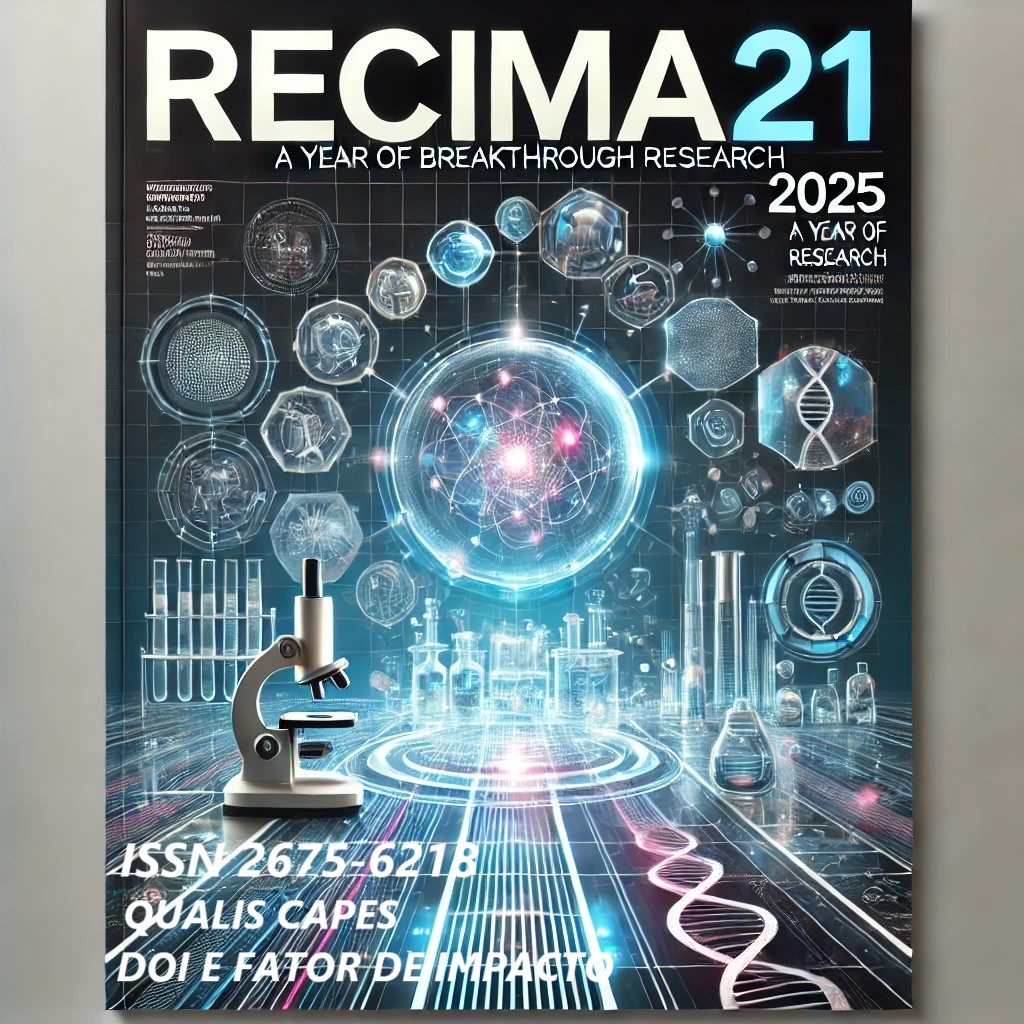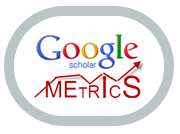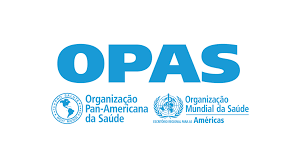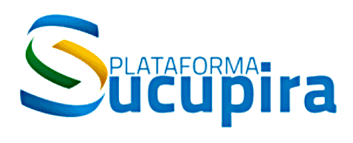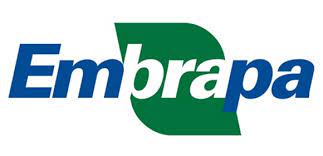CRANIAL POSTURAL ASYMMETRIES: AN INTEGRATIVE LITERATURE REVIEW
DOI:
https://doi.org/10.47820/recima21.v6i5.6440Keywords:
Plagiocephaly, Cranial Deformities, Infant, Cranial Orthosis, Child DevelopmentAbstract
Cranial postural asymmetries (CPA) in infants have become an increasingly common condition in pediatric clinical practice, especially as a result of positional and environmental factors in the first months of life. The aim of this study was to carry out an integrative review of the literature on PCA, covering its causes, classifications, impact on child development and therapeutic strategies, with an emphasis on the effectiveness of cranial orthoses. The research was conducted in the PubMed/MEDLINE, Scopus and Web of Science databases, considering publications between 2020 and 2025, in Portuguese and English. The selected studies showed that positional plagiocephaly is the most prevalent form of PCA and is often associated with the supine position maintained for long periods. The repercussions of the deformities go beyond the aesthetic aspect and can compromise neuromotor, visual and mandibular development. Therapeutic strategies include postural guidance, physiotherapy and, in indicated cases, the use of cranial orthoses, which have proved to be effective, especially when started early. It is concluded that early identification and a multidisciplinary approach are essential to minimize the impacts of PCA and promote the healthy development of infants.
Downloads
References
BLANCO-DIAZ, M.; MARCOS-ALVAREZ, M.; ESCOBIO-PRIETO, I.; DE LA FUENTE-COSTA, M.; PEREZ-DOMINGUEZ, B.; PINERO-PINTO, E.; RODRIGUEZ-RODRIGUEZ, A. M. Effectiveness of Conservative Treatments in Positional Plagiocephaly in Infants: A Systematic Review. Children (Basel), v. 10, n. 7, p. 1184, 7 jul. 2023. doi: 10.3390/children10071184. Acesso em: 08 abr. 2024. DOI: https://doi.org/10.3390/children10071184
CABRERA-MARTOS, Irene et al. Physical therapist interventions for infants with nonsynostotic positional head deformities: a systematic review. Physical therapy, v. 101, n. 8, p. pzab106, 2021. DOI: https://doi.org/10.1093/ptj/pzab106
CASARIN, Sidnéia Tessmer et al. Types of literature review: considerations of the editors of the Journal of Nursing and Health. Journal of Nursing and Health, v. 10, n. 5, 2020. DOI: https://doi.org/10.15210/jonah.v10i5.19924
COELHO, Grazielle de Fatima Santos et al. Abordagens fisioterapêuticas na plagiocefalia posicional: revisão bibliográfica. [S. l.: s. n.], 2023. Disponível em: http://repositorio.unitau.br/jspui/bitstream/20.500.11874/6844/1/TG_Grazielle_Juliane_Fisioterapia_2023%281%29.pdf. Acesso em: 07 abr. 2024.
COSTA, Allana Rocha Fernandes et al. Craniossinostoses e o cuidado à criança na rede de atenção à saúde: uma revisão integrativa da literatura. [S. l.: s. n.], 2023. DOI: https://doi.org/10.29327/2274276.1.2-5
DI CHIARA, Anna et al. Treatment of deformational plagiocephaly with physiotherapy. Journal of Craniofacial Surgery, v. 30, n. 7, p. 2008-2013, 2019. DOI: https://doi.org/10.1097/SCS.0000000000005665
DÖRHAGE, Klaus W. W. et al. Effect of head orthoses on skull deformities in positional plagiocephaly: Evaluation of a 3-dimensional approach. Journal of Cranio-Maxillofacial Surgery, v. 46, n. 6, p. 953-957, 2018. DOI: https://doi.org/10.1016/j.jcms.2018.03.013
ELLWOOD, J.; DRAPER-RODI, J.; CARNES, D. The effectiveness and safety of conservative interventions for positional plagiocephaly and congenital muscular torticollis: a synthesis of systematic reviews and guidance. Chiropr Man Therap., v. 28, n. 1, p. 31, 2020 11 jun. 2020. doi: 10.1186/s12998-020-00321-w. Acesso em: 17 jun. 2024. DOI: https://doi.org/10.1186/s12998-020-00321-w
GONZÁLEZ-SANTOS, Josefa et al. Infant cranial deformity: cranial helmet therapy or physiotherapy?. International journal of environmental research and public health, v. 17, n. 7, p. 2612, 2020. DOI: https://doi.org/10.3390/ijerph17072612
HIGA, J. Y. et al. A influência do tempo de internamento hospitalar e a prevalência de assimetrias cranianas em recém-nascidos. Varia Scientia-Ciências da Saúde, v. 4, n. 1, p. 68-77, 2018.
JUNG, B. K.; YUN, I. S. Diagnosis and treatment of positional plagiocephaly. Arch Craniofac Surg., v. 21, n. 2, p. 80-86, apr. 2020. doi: 10.7181/acfs.2020.00059. Acesso em: 09 abr. 2024 DOI: https://doi.org/10.7181/acfs.2020.00059
JUNN, Alexandra et al. Disparities in access to cranial remodeling orthosis for deformational plagiocephaly. The Cleft Palate Craniofacial Journal, v. 60, n. 4, p. 454-460, 2023. DOI: https://doi.org/10.1177/10556656211069816
KIM, J.; CHAE, K. Y. Effectiveness of Helmet therapy for infants with moderate to severe positional plagiocephaly. Clin Exp Pediatr., v. 67, n. 1, p. 46-53, jan. 2024. doi: 10.3345/cep.2023.00626. Acesso em: 17 jun. 2024. DOI: https://doi.org/10.3345/cep.2023.00626
LINZ, Christian et al. Positional Skull Deformities: Etiology, Prevention, Diagnosis, and Treatment. Deutsches Ärzteblatt International, v. 114, 2017. DOI: https://doi.org/10.3238/arztebl.2017.0535
MAI, Hang-Nga et al. Three-dimensional morphometric analysis of facial units in virtual smiling facial images with different smile expressions. The Journal of Advanced Prosthodontics, v. 15, n. 1, p. 1, 2023. DOI: https://doi.org/10.4047/jap.2023.15.1.1
MARINHO, Heloysa Figueirêdo. Assimetrias cranianas: seguimento e evolução de crianças em acompanhamento fisioterapêutico. Repositório Institucional do Unifip, v. 9, n. 1, 2024.
MARINO, S.; RUGGIERI, M.; MARINO, L.; FALSAPERLA, R. Sutures ultrasound: useful diagnostic screening for posterior plagiocephaly. Childs Nerv Syst., v. 37, n. 12, p. 3715-3720, dec. 2021. doi: 10.1007/s00381-021-05324-3. Acesso em: 09 abr. 2024. DOI: https://doi.org/10.1007/s00381-021-05324-3
MARTINS, Isabela Juliana et al. O uso da órtese craniana como abordagem não cirúrgica da plagiocefalia posicional: uma revisão sistemática. [S. l.: s. n.], 2022.
NIEBERLE, F.; SPOERL, S.; LOTTNER, L. M.; SPANIER, G.; SCHUDERER, J. G.; FIEDLER, M.; MAURER, M.; LUDWIG, N.; MEIER, J. K.; ETTL, T.; REICHERT, T. E.; TAXIS, J. Anthropometry Overestimates Cranial Asymmetry-3D Digital Photography Proves to Be a Reliable Alternative. Diagnostics (Basel)., v. 13, n. 10, p. 1707, 11 may. 2023. doi: 10.3390/diagnostics13101707. DOI: https://doi.org/10.3390/diagnostics13101707
OLIVEIRA, Clara Maria de et al. Fatores que influenciam os desfechos de tratamento da plagiocefalia posicional com uso do capacete: uma revisão sistemática. Revista Movimenta, v. 16, n. 2, 2023.
OLIVEIRA, L. de; MARTINS, M. S.; MIRANDA JÚNIOR, V. B. A intervenção fisioterapêutica em lactentes com assimetria craniana. Revista JRG de Estudos Acadêmicos, São Paulo, v. 7, n. 14, p. e14676, 2024. DOI: 10.5281/zenodo.8131569. Acesso em: 11 abr. 2024.
REBELO, Alícia Moreira; FERREIRA, Joana Silva; DIAS, Ângela Miguel. Fontanela anterior persistente – patológico ou variante normal? Nascer e Crescer. Birth and Growth Medical Jornal, v.27, n.1, p. 43-45, 2018. Disponível em: http://www.scielo.mec.pt/pdf/. Acesso em: 11 abr. 2024
ROSASCO, Augusto; SAKEMI, Bruno Kenzo; GARABEDIAN, Eduardo Atanes. Uso da visão computacional para a detecção de assimetrias cranianas em recém-nascidos. [S. l.: s. n.], 2022. Disponível em: https://adelpha-api.mackenzie.br/server/api/core/bitstreams/81bbb69e-2302-4b9c-8894-c51e2022dce3/content. Acessado em: 11 abr. 2024.
SCHAEFER, Alessandro et al. Morfologia craniana, qualidade da amamentação, tipo de parto e sexo de recém-nascidos de mães que amamentam. Research, Society and Development, [S. l.], v. 12, n. 2, p. e8912239897, 2023. Disponível em: https://rsdjournal.org/index.php/rsd/article/view/39897. Acesso em: 25 abr. 2025. DOI: https://doi.org/10.33448/rsd-v12i2.39897
TAMBER, Mandeep S. et al. Congress of Neurological Surgeons systematic review and evidence-based guideline on the role of cranial molding orthosis (helmet) therapy for patients with positional plagiocephaly. Neurosurgery, v. 79, n. 5, p. E632-E633, 2016. DOI: https://doi.org/10.1227/NEU.0000000000001430
YANG, W.; CHEN, J.; SHEN, W.; WANG, C.; WU, Z.; CHANG, Q.; LI, W.; LV, K.; PAN, Q.; LI, H.; HA, D.; ZHANG, Y. Prevalence of positional skull deformities in 530 premature infants with a corrected age of up to 6 months: a multicenter study. BMC Pediatr., v. 19, n. 1, p. 520, 30 dec. 2019. doi: 10.1186/s12887-019-1864-1. Acesso em: 09 abr. 2024. DOI: https://doi.org/10.1186/s12887-019-1864-1
Downloads
Published
License
Copyright (c) 2025 RECIMA21 - Revista Científica Multidisciplinar - ISSN 2675-6218

This work is licensed under a Creative Commons Attribution 4.0 International License.
Os direitos autorais dos artigos/resenhas/TCCs publicados pertecem à revista RECIMA21, e seguem o padrão Creative Commons (CC BY 4.0), permitindo a cópia ou reprodução, desde que cite a fonte e respeite os direitos dos autores e contenham menção aos mesmos nos créditos. Toda e qualquer obra publicada na revista, seu conteúdo é de responsabilidade dos autores, cabendo a RECIMA21 apenas ser o veículo de divulgação, seguindo os padrões nacionais e internacionais de publicação.

